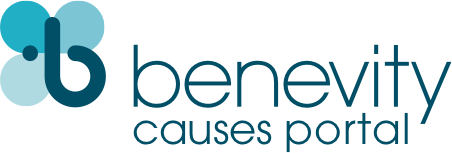ARCAS WILDLIFE RESCUE AND CONSERVATION ASSOCIATION LTD
This organization has already been registered
Someone in your organization has already registered and setup an account. would you like to join their team?Profile owner : i**o@a************a.o*g
Mission Statement
Vision To improve the chances of survival and conservation of endangered species and their habitat in Guatemala, as well as assist in the rational management of natural resources. ARCAS Mission 1. Rescue, rehabilitation and release of wildlife 2. Environmental education and outreach regarding 3. Research 4. Co-administration of protected areas 5. Sustainable community development and ecotourism
About This Cause
ARCAS Wildlife Rescue and Conservation Association is an US 501(c)3 corporation registered in Illinois, USA dedicated to preventing cruelty to animals and illegal wildlife trafficking in the US and Guatemala. It supports ARCAS Guatemala and other organizations in Guatemala in providing rescue and veterinary medical services to wildlife rescued in enforcement activities. These animals are then rehabilitated and then released back into the wild. It supports wildlife trafficking enforcement activities, supporting enforcement patrols and training workshops, and provides logistical support to such efforts. It also supports efforts in Guatemala to provide training and education in ecotourism, and other economic alternatives to local residents in marginalized rural communities, and in ensuring the sustainability of the utilization of natural resources. It conducts conservation and research efforts in certain keystone species, including the olive ridley and leatherback sea turtle, the yellow-naped amazon, jaguar and scarlet macaw. Education is fundamental in attacking the root causes of wildlife trafficking, and roughly half of its budget is dedicated to environmental education, both in Guatemala and in the US in the incredible destructiveness of wildlife trafficking. It supports the establishment and management of protected areas for wildlife on the Pacific coast, central highlands, and in the Maya Biosphere Reserve (MBR) in the northern Peten region of Guatemala. Among it principal activities: In 1989, it created a wildlife rescue center to receive animals confiscated from traffickers working in the MBR. Since the establishment of the rescue center, it has expanded to the Pacific coast and highlands areas of the country and broadened its focus to include sustainable community development, marine conservation, ecotourism and the creation and management of protected areas. Peten * Rescue and rehabilitation of 100 - 300 confiscated wild animals per year. The Rescue Center is a model for Latin America, receiving over 50 different species and serving as a hub for training, education and enforcement for the region. * Scarlet macaws: Rescue of 2-6 macaws per year from the illegal pet trade; rehabilitation and release of captive-bred birds into the MBR. Clips of these releases that are featured on the BBC documentary Jungle Animal Hospital can be viewed at: https://www.bbc.co.uk/programmes/b077nmsl * Creation of the Biodiversity Educational Center (BEC). The center was originally built with DCF funds and is currently being renovated and expanded to include improved outdoor exhibits and an exhibits hall that will include virtual reality and other interactive displays. * Over 12,000 students and tourists per year participate in educational activities, including animal releases and visits to the BEC. * Organization of 8 training courses per year in wildlife veterinary medicine for a total participation of approximately 75 US and Central American students, and 4 training courses per year for 200 enforcement officers. * Hosting of 200 -- 300 researchers, interns and volunteers per year. Hawaii/Pacific coast * Creation and administration of the 4000+ha Hawaii Marine Protected Areas (HMPA), home to the most important sea turtle nesting beaches and mangrove wetlands in Guatemala * Incubation of 40,000 - 60,000 olive ridley and leatherback sea turtle eggs at the Hawaii Hatchery. * Rescue, rehabilitation and release of 20 - 80 confiscated, injured or stranded marine and terrestrial wild animals per year. * COLORES yellow-naped amazon conservation project. Community-based nest protection and research, environmental education at 7 hotspots on the Pacific coast, attempting to save the last 500 yellow-naped amazons remaining in Guatemala (@Conservacionlorosguatemala) * Community-based sea turtle population monitoring on 7 Pacific coast index beaches. Production of the annual Sea Turtle Situational Analysis (https://arcasguatemala.org/who-we-are/arcas-publications) * 3000 -- 4000 children per year participate in educational activities in Hawaii, including presentations in schools, hatchling releases, clean-ups and reforestations. * Hosts 20 -- 40 researchers, interns and volunteers per year at the Hawaii Park. * In 2007, with the support of the IUCN and Disney created the 25ha El Salado Reserve. With WWF and the Van Tienhoven Foundation reforested the reserve and developed educational trails. Cerro Alux/Altiplano * Public awareness campaigns on wildlife trafficking. * Wildlife advocacy: IUCN motions for endangered species; Co-sponsor of the first Guatemalan animal welfare law and the establishment of the Animal Welfare Unit of the Ministry of Agriculture; Together with Animal Defenders International, coordinated the transfer of 25 lions and tigers from circuses to sanctuaries in the US and Africa. * Nomination of Disney Hero Awards in 2005 and 2006. * Collaboration in the management of the 5000+ Cordillera Alux protected area, the largest protected area in the Guatemala City area and home to a wealth of epiphytes, birds and reptiles. * Disaster relief for animals and humans during Hurricane Mitch, TS Stan and the Fuego volcano eruption (Rotary Club/Disney/IFAW). Education and public outreach are cross-cutting themes in all of ARCAS’s activities. It has created interpretive centers in Peten, Cerro Alux, Hawaii and in other areas of the country, and carries out regular presentations in area schools as well as participatory activities such as beach clean ups, wildlife releases, educational reforestations and environmental festivals. This project will use the BEC as a platform from which to expand ARCAS’s environmental education activities into 10 communities of influence in the MBR, communities where wildlife trafficking, illegal logging and hunting are still prevalent activities, but communities that also have high potential for ecotourism. The project will also renovate 6 interpretive exhibits at the BEC and host field trips of students, teachers and parents to the BEC.
